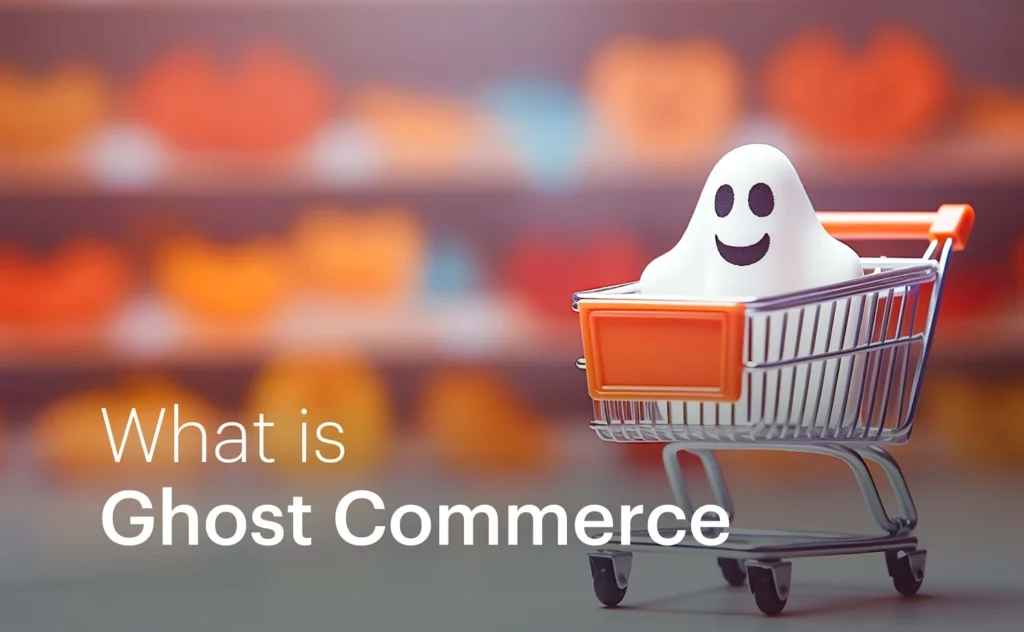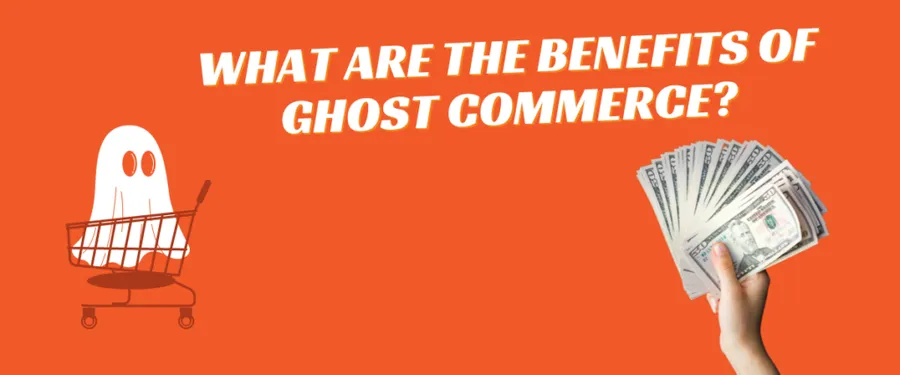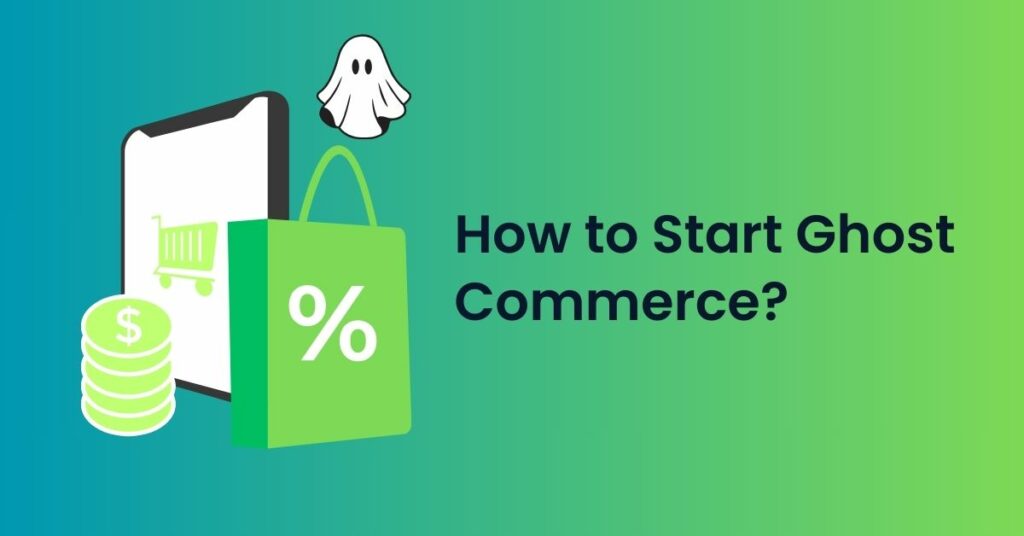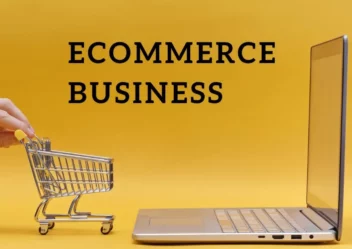What Is Ghost Commerce?
Have you ever bought something online and been surprised by how smooth and easy the experience was? Maybe the checkout process was incredibly fast, or the website had a unique and cool design. There’s a good chance you’ve experienced “ghost commerce” without even knowing it!
But what exactly is ghost commerce meaning? How does it work? And is it the right approach for your business?
Lusion – Multipurpose eCommerce Shopify Theme
We provide an amazing Shopify theme with fast and responsive designs. Let’s find out!
In this comprehensive blog post, you will learn everything about ghost commerce, exploring its intricacies, benefits, drawbacks, and more. And if you’re intrigued by the possibilities, we’ll even guide you on how to start ghost commerce for your online store.
What Is Ghost Commerce?

Ghost commerce, also known as headless commerce or API-driven commerce, is an eCommerce approach where the frontend (the “head”) of your online store is decoupled from the backend. This means that the presentation layer of your store, which is what customers interact with, is completely separate from the underlying e-commerce infrastructure that handles things like product information, inventory management, and order processing.
Imagine a traditional online store as a single, interconnected unit. The frontend and backend are tightly intertwined, limiting flexibility and customization options. In contrast, ghost commerce separates these two components, allowing businesses to create unique and engaging customer experiences without being constrained by the limitations of a traditional eCommerce platform.
The Building Blocks of Ghost Commerce
A ghost commerce setup typically consists of three core components:
- The Front-End: This is the customer-facing part of your online store, encompassing everything from the website design and product displays to the checkout process. In a ghost commerce model, the frontend is built independently using any technology you prefer, such as a content management system (CMS), a JavaScript framework, or a mobile app.
- The Back-End: This is the engine room of your e-commerce operation, handling all the behind-the-scenes functionalities like inventory management, order processing, and payment gateways. You can choose from various back-end solutions, including dedicated eCommerce platforms, custom-built systems, or cloud-based services.
- The API: The Application Programming Interface (API) acts as the bridge between the front-end and the back-end. It allows these two components to communicate seamlessly, exchanging data and instructions to ensure a smooth and synchronized shopping experience.
How Does Ghost Commerce Work?
Ghost commerce is a way of selling online without needing to hold any stock or manage a physical store. Here’s how it works:
- Find a supplier: Partner with a supplier who offers dropshipping services. They handle the inventory and shipping.
- Create an online presence: This could be a website, social media page, or online marketplace.
- Promote products: Market your chosen products to your audience, focusing on building trust and a strong brand.
- Redirect customers: When someone buys from you, the order goes directly to your supplier.
- Supplier ships the order: The supplier packages and sends the product directly to the customer.
Essentially, you act as a middleman, connecting customers with suppliers. You’re responsible for marketing and sales, while your supplier takes care of the logistics.
Benefits of Ghost Commerce

Ghost commerce offers several advantages over traditional e-commerce approaches, The rise of ghost commerce is driven by its ability to address the limitations of traditional eCommerce platforms and offer a range of benefits:
- Unparalleled Flexibility and Customization: Ghost commerce empowers businesses to create bespoke shopping experiences tailored to their specific needs and target audience. This flexibility allows for greater creativity and innovation in design and functionality.
- Enhanced Performance and Scalability: By decoupling the frontend and backend, ghost commerce allows for faster loading times and improved website performance. This is crucial in today’s fast-paced digital world, where customers expect seamless and instant experiences.
- Omnichannel Capabilities: Ghost commerce enables businesses to sell their products across multiple channels, including websites, mobile apps, social media platforms, and even IoT devices. This creates a unified and consistent brand experience for customers, regardless of where they choose to shop.
- Future-Proof Technology: As technology evolves, businesses can easily adapt and integrate new frontend technologies without affecting the backend infrastructure. This ensures that their online store remains cutting-edge and competitive.
- Improved Developer Experience: The API-driven nature of ghost commerce simplifies development and maintenance, allowing developers to focus on creating innovative features and functionalities.
Drawbacks of Ghost Commerce

While ghost commerce offers numerous benefits, it’s important to be aware of the potential drawbacks as well:
- Increased Complexity: Implementing a ghost commerce solution can be more complex than setting up a traditional online store. It requires technical expertise and a deeper understanding of APIs and web development.
- Higher Costs: Ghost commerce can be more expensive than traditional e-commerce, especially for smaller businesses. You may need to invest in additional development resources and infrastructure to support your headless setup.
- Maintenance Overhead: Maintaining a ghost commerce solution can require more effort and resources than maintaining a traditional online store. You need to ensure that both the frontend and back end are updated and functioning properly.
How to Start Ghost Commerce?

Ready to explore the world of ghost commerce? Here’s a basic roadmap to get you started:
- Choose a headless commerce platform: Select a backend platform that aligns with your business needs and budget. Popular options include Commercetools, Shopify Plus, and BigCommerce.
- Decide on your frontend: Determine the technology you’ll use to build your storefront. Consider factors like your team’s skills, desired design flexibility, and performance requirements.
- Find a development partner (if needed): If you lack in-house expertise, partner with a development agency specializing in ghost commerce implementations.
- Select and integrate necessary APIs: Choose APIs for functionalities like payment gateways, shipping providers, and marketing automation tools.
- Design and develop your storefront: Create a unique and engaging customer experience using your chosen frontend technology.
- Test thoroughly: Rigorously test your ghost commerce setup to ensure seamless performance and functionality across all devices and channels.
Ghost Commerce vs. Traditional eCommerce
While ghost commerce offers numerous advantages, it’s essential to understand the key differences between ghost commerce and traditional eCommerce platforms:
| Feature | Ghost Commerce | Traditional eCommerce |
| Front-End and Back-End | Decoupled | Tightly integrated |
| Customization | Highly customizable | Limited customization options |
| Flexibility | Extremely flexible | Less flexible |
| Scalability | Highly scalable | May have scalability limitations |
| Development | Requires development expertise | Easier to set up and manage |
| Cost | Can be more expensive initially | Typically more affordable upfront |
Is Ghost Commerce Right for Your Business?
While ghost commerce offers numerous advantages, it’s essential to consider whether it’s the right solution for your specific needs. Here are some factors to consider:
- Technical Expertise: Implementing ghost commerce requires a certain level of technical expertise, either in-house or through a trusted partner.
- Budget: While ghost commerce can offer long-term cost savings, the initial investment may be higher than traditional e-commerce solutions.
- Business Complexity: Ghost commerce is particularly well-suited for businesses with complex requirements, such as those with multiple sales channels or a large product catalog.
If you’re looking for a flexible, scalable, and future-proof e-commerce solution, ghost commerce may be the perfect choice for your business. By embracing this innovative approach, you can unlock new possibilities for customer engagement, brand growth, and digital transformation.
Examples of Ghost Commerce in Action
Many businesses across various industries are already leveraging the power of ghost commerce to enhance their online presence and customer experiences. Here are a few examples:
- Nike: Nike uses ghost commerce to power its SNKRS app, which provides a unique and engaging experience for sneaker enthusiasts.
- Netflix: Netflix utilizes ghost commerce to deliver personalized content recommendations and seamless streaming experiences across various devices.
- IKEA: IKEA leverages ghost commerce to create interactive shopping experiences, such as augmented reality apps that allow customers to visualize furniture in their homes.
- Amazon: Amazon employs ghost commerce to power its Alexa voice assistant, enabling customers to shop and interact with the brand using voice commands.
The Future of Ghost Commerce
Ghost commerce is still a relatively new concept, but it’s rapidly gaining traction as more businesses recognize its potential. As technology continues to evolve, we can expect to see even more innovative applications of ghost commerce in the years to come. This growth will undoubtedly lead to an increase in ghost commerce jobs for developers, marketers, and other professionals with expertise in this emerging field.
Some of the key trends shaping the future of ghost commerce include:
- The rise of composable commerce: Composable commerce takes the concept of ghost commerce even further, allowing businesses to assemble their e-commerce stack from a collection of best-of-breed services.
- Increased personalization: Ghost commerce will enable even greater personalization, allowing businesses to tailor customer experiences to individual preferences and behaviors.
- The integration of AI and machine learning: AI and machine learning will play an increasingly important role in ghost commerce, powering features such as product recommendations, dynamic pricing, and fraud detection.
- The growth of the metaverse: As the metaverse continues to evolve, ghost commerce will be crucial for creating immersive and engaging shopping experiences in virtual worlds.
Conclusion
Ghost commerce is a powerful approach to e-commerce that offers numerous benefits for businesses looking to enhance their online presence and customer experiences. While it may not be the right solution for everyone, its flexibility, scalability, and omnichannel capabilities make it an attractive option for businesses that require a high degree of customization and control over their online store.
Read more: 8+ Best Shopify Competitors & Alternatives Compared



